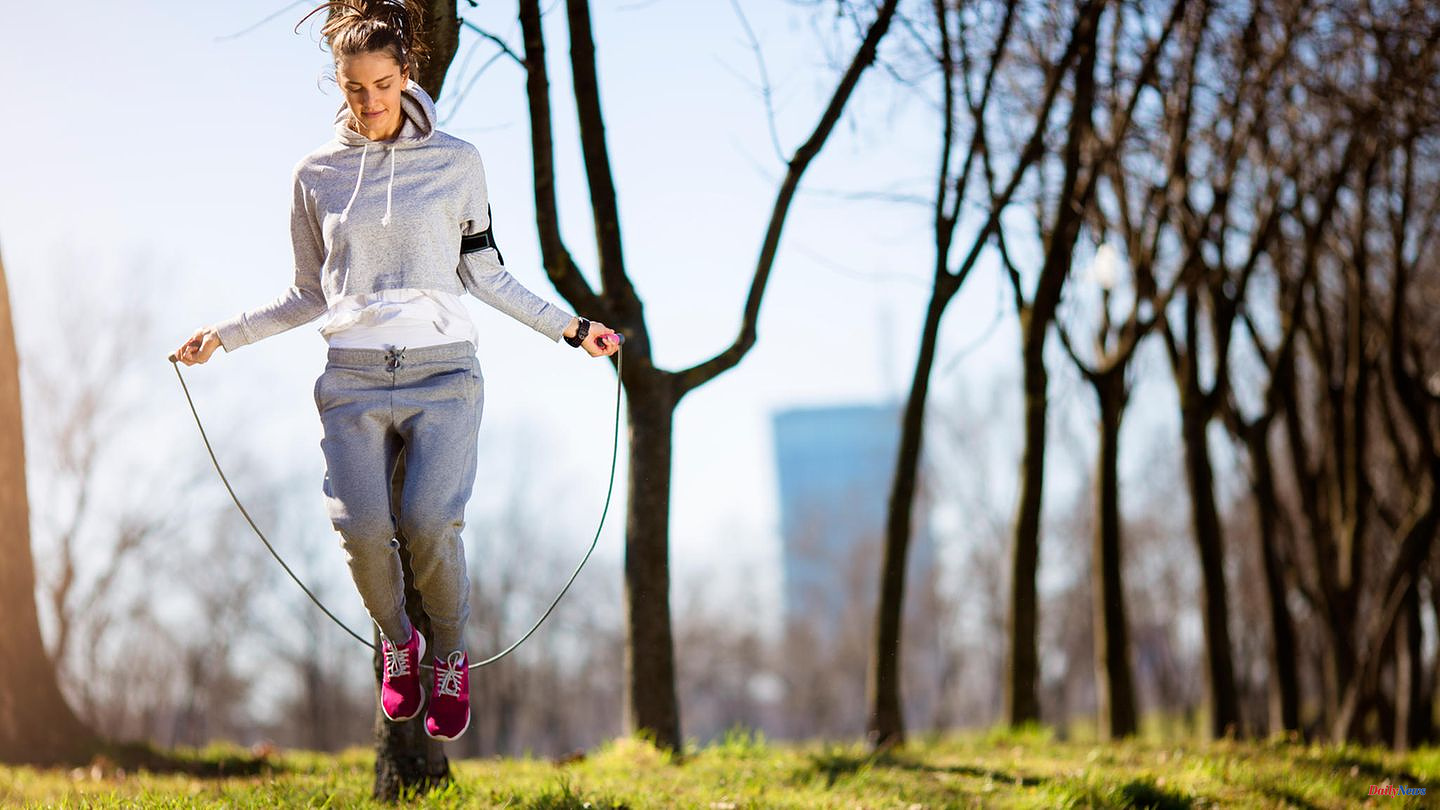When I think back to my childhood and what we spent the long break with in the schoolyard, the first things that come to mind are bungee cords and jumping rope. It's been decades and I can't remember the last time I held a skipping rope in my hands. But I kept observing women and men jumping during the Corona lockdown and afterwards. On playgrounds, but also in the open-air fitness areas that are now available in many cities in Germany. Jumping rope has become a fitness trend in recent years. Martial artists are no longer the only ones who use this practical piece of sports equipment for their warm-up.
In this article you will find out why jumping rope is a time-saving and at the same time efficient and healthy alternative to jogging and what beginners should pay attention to when training.
Jumping rope is one thing above all: uncomplicated. The sports equipment itself, a pair of ordinary casual shoes, some space and a small pinch of coordination. The fitness set-up for beginners is ready. However, rope skipping newcomers in particular should ask themselves what they should look out for when buying a skipping rope. Well, basically you can't go wrong. As a rule, the handles of skipping ropes are connected to the rope via ball bearings. This has the advantage that you no longer have to work with your whole arm, but only with your wrist to make the rope swing. Good ropes can also be adjusted in length with a small screw, so that the whole family can try their hand at jumping rope. The cable itself consists of plastic-coated steel cables or nylon. Some models are available in different thicknesses. Beginners should first use PVC ropes. Leather and wire ropes belong more in the hands of advanced rope skippers. For ropes that are not adjustable in length, the handles should reach below the armpits when standing in the middle of the taut rope. Otherwise, the rule applies: the shorter the rope, the more demanding the training. An entry-level model from Cravallo is available here.
First of all: Jumping rope is a full body workout. It is not only the thigh and calf muscles that are claimed, as one might initially assume. The torso, more precisely the torso stability, as well as the chest and arms benefit from regular rope skipping. However, muscle building is more of a secondary concern when jumping rope. Rather, it is about improving basic endurance. If you train properly and regularly, you can even do something for your weight. Because jumping rope not only brings variety to cardio training. A workout with the rope also burns some calories. Rope skipping could be an interesting alternative for fitness training in the park, especially for those who don’t like jogging and fair-weather runners. It works both indoors and outdoors, takes up very little space and takes significantly less time. This requires a small portion of coordinative talent. In short: Jumping rope not only requires physical fitness, but also coordination skills. Here's a speed rope with bag and guide for beginners.
Instead of the long-term method, the most common training variant when jogging, the potential of jumping rope lies in interval training. Important: No cold start! To prevent injuries and to prepare the body for the following exertion, you should plan a 10-minute warm-up. Easy jogging with light arm circles gets the circulation going.
Beginners should start with 60-second intervals. In concrete terms, this means jumping at a moderate pace for one minute, followed by a one-minute break. The whole thing five to ten times, depending on your fitness level. Anyone who can do this two to three days a week increases the exercise time to two minutes with a break of 60 to 90 seconds. For starters, simply jumping on your forefoot should get your heart rate pumping enough.
Alternative interval training (2-3 times per week)
Even if you don't feel challenged at first: Don't overdo it and make sure you take breaks. Your body needs this time to provide enough energy for the next interval.
Conclusion: Jumping rope is much more than jumping around in the schoolyard for fun and frolic. Done correctly, it combines stamina with coordination in an ideal way, making it one of the most efficient and at the same time inexpensive fitness workouts.
This article contains so-called affiliate links. There is more information here.












